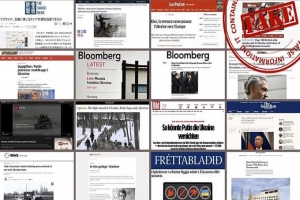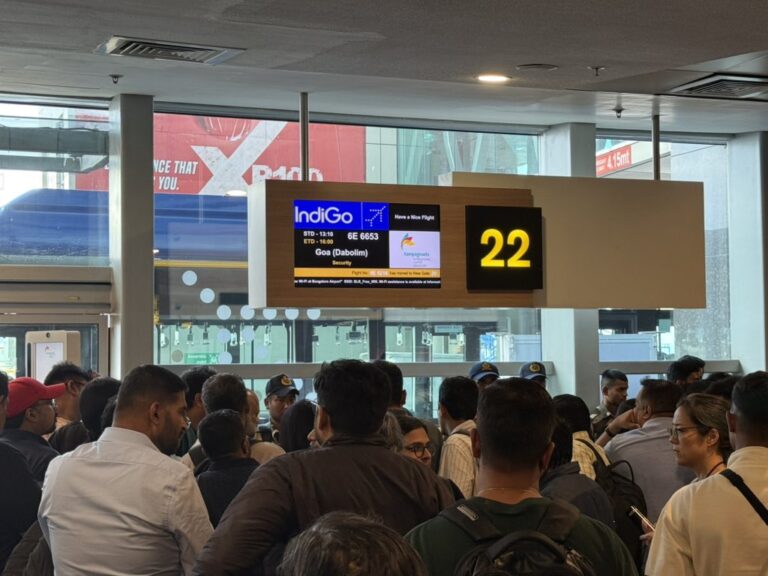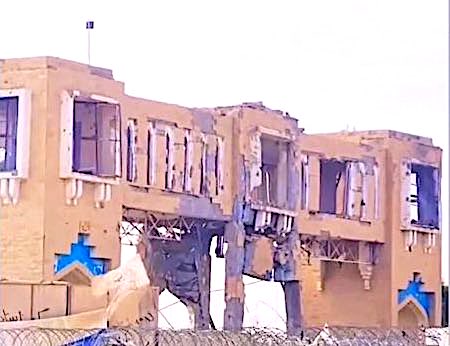
The Ukraine Crisis – 1


By Deepak Parvatiyar and Venkatesh Raghavan
With the so-called ‘deadline’ of Wednesday, February 16, 2022, of a purported Russian attack on Ukraine, about to expire today, Russia mocked the Western media and accused it of whipping up hysteria. In a series of tweets, Russian Foreign Ministry Spokeswoman Maria Zakharova launched a vigorous attack on the West, and quipped, “Today we mark another day of the “start of the war with Ukraine,” which did not happen again, to the Western media outlets’ regret, no matter how hard they whip up the hysteria.”
Mikhail Ulyanov, Representative of Russia to International Organizations in Vienna, tweeted that the international community was warned that about 1 a.m. on February 16 Russia would invade its neighbour. “Where is the invasion? Any apologies for inflaming tensions and misleading the world public? Shame, just shame!!!” he said.
The Politico – a US newspaper, had published that US President Joe Biden claimed Russia could allegedly attack Ukraine on February 16, 2022. The Russian foreign ministry today further pointed out that British newspapers The Sun and the Daily Mirror published “sensational” news: “intelligence” sources allegedly knew for sure that Russia’s “invasion” of Ukraine was scheduled for the night of February 15-16.” Russia went on to state, “So they simply lied to their readers.”
💬 #Zakharova: This week we witnessed the culmination of misinformation campaign, launched by the West, on Russia’s mythical “invasion” of Ukraine -> https://t.co/ExWNRX2ZJT
❗️ Meanwhile, @NATO continues to pump weapons into Ukraine under the information cover they’ve created. pic.twitter.com/F8jt1of23C
— MFA Russia 🇷🇺 (@mfa_russia) February 16, 2022
Zakharova stated this week what was witnessed was “the culmination of a misinformation campaign, launched by the West, on Russia’s mythical “invasion” of Ukraine”.
Russia claimed, “NATO continues to pump weapons into Ukraine under the information cover they’ve created”. Zakharova stated that peace in the region was threatened “not by any reviews of Russian and Belarusian defence capability but by the Western steps to build up NATO forces on the Union State border and to supply weapons to Kiev”.
Earlier on February 9, 2022, too, the Russian foreign office had claimed that NATO was expanding its military infrastructure and the scale of exercises, and increasing its military contingents in Eastern Europe. “These actions are proof that our demands for security guarantees are justified,” it had stated.
Russia has repeatedly termed it as “absurd”, the claims by the West about the #AlliedResolve2022 drills. During the January 20, 2022 briefing, the Russian foreign office stated, it had “forecast” that the Western propaganda resources will keep mounting the allegations about the Russian offensive. “And they did,” it said.
The recent hysteria was being built up ever since Russian President Vladimir Putin raised objections to the USA-led NATO war exercises, which he claimed were too close to the Russian borders. Putin, on December 21, 2021, had expressed concerns over the “complicated” military-political situation in the world, in particular, the growth of the US and NATO military forces in direct proximity to the Russian border and major military drills, including unscheduled ones, are a cause for concern.
“It is extremely alarming that elements of the US global defence system are being deployed near Russia. The Mk 41 launchers, which are located in Romania and are to be deployed in Poland, are adapted for launching the Tomahawk strike missiles. If this infrastructure continues to move forward, and if US and NATO missile systems are deployed in Ukraine, their flight time to Moscow will be only 7–10 minutes or even five minutes for hypersonic systems. This is a huge challenge for us, for our security,” he had said. He had further claimed that the United States and NATO were consistently increasing the scale and intensity of military training near Russia.
Putin had said: “These drills increasingly include the use of strategic aviation and simulated nuclear missile strikes at Russian targets. The number of flights by strategic aircraft near Russian borders has more than doubled…The military drills include various scenarios involving the use of coalition groups of forces and non-NATO troops (Georgia, Moldova and Ukraine) against Russia. The desire of the Alliance to involve the Ukrainian armed forces in its military activities is threatening security, considering Kiev’s attempts at a military solution in Donbass…They are setting up firing positions in residential houses and social facilities and are preparing the Ukrainian special operations forces and far-right armed groups for active hostilities. Unidentified chemical warfare agents have been delivered to Avdeyevka and Krasny Liman for the purpose of provocations. The Ukrainian military keeps up the shelling of civilian neighbourhoods in Donbass and the positions of the people’s militias of the Lugansk and Donetsk republics to provoke a response.”
Tensions started mounting by the end of 2021 following the movement of Russian troops towards the Ukraine border. A Washington Post report of December 3, 2021, had stated that the Russian officials had defended the likely reserve mobilization as a necessary measure to help modernize the Russian armed forces. By the end of the first week of February 2022, Russia had amassed more than 100,000 troops near Ukraine’s eastern and southern borders, which, Kremlin said was a rehearsal in repelling external aggression. On February 10, 2022, Pentagon spokesman John Kirby told reporters the number of Russian soldiers assembled at border numbered “well north of 100,000 and it continues to grow”. He said Russia had also moved up to 30,000 troops, two battalions of S-400 surface-to-air missile systems and numerous fighter jets into Belarus for joint training exercises with the Belarusian army.
As tension escalated, a host of Western nations including the United States issued a cautionary note to their citizens to avoid any travel venture to Ukraine. Besides, their citizens dwelling in Ukraine have been advised to leave the shores well in advance of any likely Russian aggression on its soil.
The USA also sounded an alert that Russia is likely to fake a Ukrainian attack on its soil and use this pretext to unleash military aggression on Ukraine. The US bid to frame Russia came hours ahead of the flagging of China’s Winter Olympics when both (Chinese President) Xi Jinping and Putin had a protracted dialogue. Diplomatic channels sounded that it was in anticipation somewhat akin to what the CIA had planned during John F Kennedy’s stint as US President. They wanted to bomb the Bay of Pigs and use it as a pretext to attack Cuba.
Putin though, as was evident from his meeting with his foreign minister Sergey Lavrov on February 14, 2022, had seen the entire episode as an attempt to drag Russia “into an endless negotiating process with no logical conclusion”.
Interestingly, Putin continued to play “captain cool” with the West and it was the Western head of states, one after another who planned to visit him in Moscow. The latest included German Chancellor Olaf Scholz. Earlier, French President Emmanuel Macron paid his visits to both Moscow and Kiev. The Turkish President, Recep Tayyip Erdogan, had also paid visits to both the capitals.
For the moment though, tension seems to have temporarily eased out after Russian Defense Ministry said on February 15, 2022, that the country was moving some forces away from the border with Ukraine and from Crimea following military drills. Whether that was because of the sustained Western pressure or not is unclear, but yesterday, while on one hand, the German Chancellor was in Moscow, on the other hand, the US Deputy Secretary of State Wendy Sherman was working out a strategy in Washington. He had discussions with French Ministry of Foreign Affairs (MFA) Secretary-General François Delattre, German MFA State Secretary Andreas Michaelis, Italian MFA Secretary General Ettore Sequi, and UK Minister of State for the Middle East, North Africa and North America James Cleverly. They discussed their ongoing diplomatic efforts to urge Russia to deescalate and choose the path of diplomacy while reaffirming their readiness to impose swift, severe costs on the Russian Federation in response to any further military action against Ukraine. Deputy Secretary Sherman emphasised that Ukraine continues to have the United States’ enduring and steadfast support for its sovereignty and territorial integrity.
Yet, the fissures are far from over and have become more complicated following yesterday’s Russian Duma resolution on eastern Ukraine to recognise the Lugansk and Donetsk people’s republics. The USA claimed that enactment of this resolution would further undermine Ukraine’s sovereignty and territorial integrity, constitute a gross violation of international law, call into further question Russia’s stated commitment to continue to engage in diplomacy to achieve a peaceful resolution of this crisis, and necessitate a swift and firm response from the United States in full coordination with our Allies and partners. “The Russian Duma has stated that it plans to send to President Putin an appeal to recognize the so-called Donetsk and Luhansk People’s Republics as “independent.” To be clear: Kremlin approval of this appeal would amount to the Russian government’s wholesale rejection of its commitments under the Minsk agreements, which outline the process for the full political, social, and economic reintegration of those parts of Ukraine’s Donbas region controlled by Russia-led forces and political proxies since 2014,” the US Secretary of State, Antony J. Blinken, stated in Washington today.
Yesterday, Putin had said during a joint press conference with Chancellor Scholze that there were two draft documents. One was presented by United Russia, which has an overwhelming majority, and the other, more sharply worded initiative provided for making a direct request to the President on recognising these republics. “I am told that the vote was open and free, which means that party discipline was not applied in this case, and the majority of deputies voted for the resolution submitted by an opposition party, the Communist Party of the Russian Federation.”
Putin played down the partial troop withdrawal when asked a question about it during the joint press conference. “What is there to comment on? There is nothing to comment on when the issue concerns executive authorities, including the country’s military and political leadership. Yes, a decision has been made to pull out a part of the troops,” he said.
Interestingly, a more elaborate response on the partial troops’ withdrawal came from Beijing where the Chinese foreign ministry slammed the USA, stating that for days, the US had been playing up the threat of war and creating an air of tension that gravely impacted people’s lives in Ukraine.
“I noted that the Russian side recently said that the West has resorted to “information terrorism” on the Ukraine issue and that February 15, 2022, will go down in history as the day of the failure of Western propaganda. We must point out that it is exactly the persistent hyping and dissemination of disinformation by some in the West that have added more turbulence and uncertainty to the world already fraught with challenges and intensified distrust and division. We hope relevant parties can stop such disinformation campaign and do more things that benefit peace, mutual trust and cooperation,” Chinese foreign ministry spokesperson Wang Wenbin told reporters in Beijing today.
It is clear that while Russia has stoutly denied any intentions it had of a military showdown with Ukraine, neighbouring China lent support to President Putin to veto any move by the Western powers to include any new member state (to be read Ukraine) into the NATO alliance. The two neighbours sounded their cry of protest against a US attempt to destabilise global security. The Russian President responded to China’s solidarity, stating, “Our two countries share a dignified relationship.”
Calling it an attempt to revisit the Cold War era, the Asian bloc comprising Russia and China voiced their concern over any move by NATO to expand its member states at this juncture. The West on its part has hurled accusations at Moscow for building up troops on the Russian border with Ukraine to an upward of 100,000 with an eye to carrying out a military invasion. Both Russia and China expressed deep concern over the defence alliance forged by the US, United Kingdom and Australia against the Asian bloc.
Yet, contrasting statements came out from China on the current Ukraine imbroglio. While China asserted that it would stand by Russia in the event of any crippling sanctions imposed on the latter by the United States, it at the same time stressed that it was not in favour of any military invasion of Ukraine. It referred to the good relations Beijing enjoyed with Kiev. China also voiced that the trade relations it enjoyed with Ukraine were of strategic concern. There was, however, a united call for the Western NATO allies to change their hostile policies towards both Russia and China. Summing it up, both Xi and Putin stated their desire to put up a united front.






interesting article